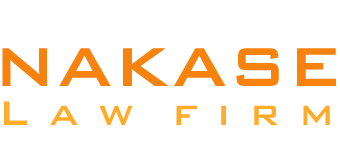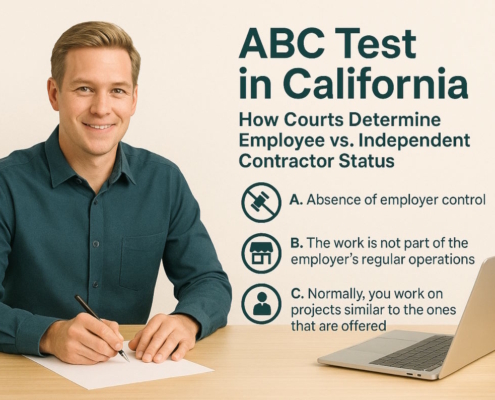What is employee onboarding?
In order to establish a strong employee-employer relationship, the onboarding process is essential. Effective onboarding programs have a positive effect on employee retention, job satisfaction, and performance. We’ll go into much more detail on employee onboarding in this post. It will assist you in designing a customized onboarding procedure to forge enduring bonds with your new staff.
The process via which recently hired staff members become acquainted with the company, its members, and its culture is known as employee onboarding. This phase of the employee life cycle is crucial.
An organization introduces new hires and integrates them into their new roles and responsibilities. They meet managers and coworkers, see their workspace, receive the tools and resources they require, become acquainted with work procedures, and learn about the mission and core values of the company. After completing the onboarding procedure, individuals are prepared to work on their own.
Two goals are achieved during the employee onboarding phase. One the one hand, getting new personnel up and running as soon as possible is the conventional purpose of employee onboarding. However, onboarding’s more recent function has been to mold the crucial initial impressions that new hires have of the organization.
Following a smooth onboarding process, the worker:
Has a relationship with their immediate supervisor and is enthusiastic about their position at the organization. They have also met their colleagues.
Possesses all the tools needed to complete their work efficiently
Has received the required training
Is aware of their responsibilities
Feels prepared to succeed
Will be comfortable in the company and has formed a few significant relationships
Has specific goals to strive for and has fulfilled those goals.
Understands their evaluation criteria in detail
Employee onboarding is brief—lasting less than three months—in 89% of firms. To be genuinely effective, onboarding must be an ongoing process that lasts up to a year or longer, depending on the person, in order to maximize performance.
The easiest method to determine whether a worker is effectively onboarded is to simply follow up with them on a regular basis to find out if they have the resources and know-how to do their jobs, are engaged and feel like a part of the team. Should this be untrue, the onboarding procedure has most likely been unsuccessful.
The significance of onboarding new employees
The Brandon Hall Group found that effective employee onboarding can increase retention by 82%. Positive onboarding experiences increase an employee’s commitment to their firm by 18 times, according to research from BambooHR.
Additionally, onboarding shortens the time it takes for a new hire to become fully productive—that is, until they begin contributing entirely to the company. It takes 28 weeks on average to reach productivity.
Put another way, companies may boost both income and employee satisfaction when they have dedicated and effective workers.
Fresh recruits are eager to make an impression, deliver results, and fit in with their new company. On the other hand, a subpar onboarding process—or none at all—can leave workers feeling depressed and unable to thrive in their jobs.
In this case, they are probably going to leave the company early and add to the turnover of new hires, which has numerous negative effects on an organization. Significant employee attrition results in greater labor expenses, disarray, and diminished group spirit. Actually, in the first six months of employment, large firms may lose as many as 16% of new personnel.
Strong onboarding procedures are a need, not a luxury for businesses looking to attract and keep top people.
Five phases of employee onboarding
The onboarding phase begins the moment an applicant signs their offer letter and concludes when the worker is able to perform the job for which they were employed without assistance.
The preboarding period is the time frame between signing the offer letter to your first day of work. Although preboarding is occasionally seen as a distinct procedure, in this post we’ll examine it as a component of the larger onboarding process for employees.
The phases of employee onboarding are a subject of disagreement. We’ve identified five important phases.
Let’s examine each phase in further depth.
- Preboarding prior to the first day
The preboarding phase starts when your prospect signs their employment offer letter. These are the most important things to get ready for prior to their first day.
Send a helpful information email and a welcome video.
Provide a welcome email to the new team members and address any queries they may have, such as:
When should I begin?
Where should I go now?/Where do I enter my login information?
Do I pack a lunch for work?
If I have any questions, who should I ask?
Provide instructions about how to log into the company’s network to your employees if you are onboarding them on-site. This means hiring managers no longer have to go to IT on their first day to activate their accounts.
Including a video of the candidate’s supervisor or team welcoming them to the organization, or a video of the company founders, is also a smart idea. The employee experience becomes much more intimate as a result.
New hires have access to Vodafone’s Digital Onboarding Platform shortly after they sign their acceptance letter. This helps Vodafone further streamline their onboarding process, helps them discover important facts about the firm, and leads them through the onboarding process.
Extend an invitation to social gatherings
Send out an invitation to the team’s first social gathering to facilitate networking among coworkers.
Make a 30-60-90-day plan
The employee’s tasks and the organization’s performance requirements are outlined in the 30-60-90-day plan. This covers both new projects they will spearhead on their own and existing responsibilities that are part of their job. Following the employee’s first day, SMART goals with distinct success measures will be established for the following three months: thirty, sixty, and ninety.
This plan not only makes it apparent to the new hire what is expected of them, but it also compels the immediate management to be explicit about what is required of them.
Tell everyone about the recent hire
Inform the team about the new hire’s role and responsibilities at least one day prior to their start date. This clarifies roles and outlines the projects that the new team member will work on. On their first day, it also helps the new employee feel appreciated.
Since its founding, Buffer has operated entirely remotely. Five emails are sent to new hires prior to their start date, which aids in sharing and gathering the necessary data for a seamless onboarding process.
The following emails are included:
Greetings by email
Gathering basic info
Introducing them to peers and managers
Presenting the equipment that new employees will use
Establishing expectations from the start
Draft schedule for the first day and first week of onboarding
The first day of work for a new employee at any company is never easy. The worker takes a tour of the entire office, meets the team, and has a meeting with his or her supervisor after the management team has introduced the company.
A successful first day necessitates the active engagement of several employees. Preparation is therefore essential. It also creates a clear schedule for the incoming worker.
Establish network access and an email address
Each business has a different procedure for this. This can be a different workflow if there is a distinct IT department. It is imperative, nonetheless, that this be set up and checked for problems prior to the worker commencing work. In this manner, they can avoid becoming stuck right away and can talk to IT without wasting time or creating conflict.
Stay in communication
There may occasionally be a lengthy wait between a new employee signing the contract and starting work. During this time, it’s critical to maintain the excitement of new hires. Managers or HR should regularly check in with new hires and encourage them to ask and respond to these questions.
Workplace setup and tools
Assign (and tidy) the desk area — It is good to give new workers a dedicated space for the first few days or weeks, even if your company operates on a hot-desk model. Having an allocated area next to their boss and team is essential to involving them right away and making them feel comfortable. Make sure their desk is clear and tidy; this is an easy method to make a good first impression. Provide remote workers with a video or instruction kit that explains how they should set up their equipment or workstations at home.
Hardware: Prepare hardware, such as a computer, mouse, keyboard, and cell phone, before the new employee joins. The day before the new candidate starts, set up the computer and install any updates. They won’t have to wait a long time for the installation procedure to finish on its own after that.
Equipment user agreement Prepare the laptop and user agreement beforehand. It is imperative that this legal document be signed on the first day of work in order to comply with regulations.
Workplace access card: With this card, the staff member can come to work by themselves the following day.
Business travel card: It’s customary for businesses in some nations, including the Netherlands, to give their employees public transportation cards. If the worker is coming by car, confirm that they can park at the office on the first day and that the parking lots are open.
Welcome kit: Each firm will have a different one. A branded notepad, pencil, water bottle, shoulder bag, and whatever else you’d like to give your new hires are examples of common welcome gifts.
- Orientation on the first day
It’s more important to focus on experience than knowledge on the first day of work, or orientation. On the first day, you will fill the candidate in on a lot of information. They won’t be able to retain and comprehend everything, though. The first day should aim to create a lasting, positive experience because it is what they will remember for the duration of their employment.
Greetings
Prepare to let the applicant inside.
The candidate won’t have an access card for the workplace yet. Verify that they are aware of their destination and that someone is waiting for them at the reception to let them in and give them a hearty greeting.
Talk about the day’s schedule
Provide a detailed schedule for the new employee’s first day. To let them know what to expect, it’s a good idea to draft, type, and email this out early in the day. The new hire and their boss may then take a quick seat and go over it, lending structure to the day.
Tour of the workplace
Give the new hire a tour of the workspace if they are coming in so they are familiar with where everything is. This covers the restrooms, the shared kitchen, the operation of the tea and coffee makers, the location and usage of the printers, and the seating arrangements for the various departments.
Present to coworkers and the team
Introducing fresh recruits to their coworkers is a vital part of the orientation process for new employees. In large firms, it won’t be feasible to present the new hire to everyone, but make sure they get to know everyone on their team.
Assign a new hire to an onboarding buddy
Providing new hires with an onboarding buddy provides a network of support and facilitates their familiarization with work procedures, workplace culture, benefits, and other aspects. In order to serve as peer mentors, Netflix makes sure that every new hire has an onboarding buddy and receives an email from them on their first day.
30-day, 60-day, and 90-day plans
Introduce the newly hired employee to their 90-day plan later in the day. Their manager gives them a thorough explanation of each component after they receive it, letting them know exactly what is required of them and what to anticipate.
Welcome drinks and snacks
Why save drinks, snacks, and desserts for the birthdays of your employees? Make the first day of work unique for new hires by providing them with something special, and invite everyone in the workplace to join in the celebration. Remind everyone to bring a food or beverage if you’re hosting a remote welcome so the group may enjoy it together on a call as a team.
Presentation of the company
In larger businesses, new hires usually watch a presentation given by senior management or the company’s core founders that covers the business’s objectives, mission, and values as well as roles, teams, and culture.
Google is renowned for its core principles, which include acting with honesty and respect at all times. One such principle is the “Don’t Be Evil” motto. On their first day, new hires receive training on these fundamentals of the business, and they are encouraged to continue learning more as they work there.
An alternative option for this presentation might be a video. During the onboarding process, prospective applicants and new hires are shown a brief two-minute film from Grubhub.
This provides them with all the necessary knowledge to turn their new work into a fulfilling experience.
Monthly and weekly schedule
The candidate is given an overview of the monthly and weekly schedule for their new position by the manager. A monthly company update, a weekly or daily team meeting, and a recurring team lunch are a few examples of this.
On the team calendar, invite people to events and holidays
Make that the new recruit receives access to the vacation calendar, knows how to use it, and is added to the schedule for these activities.
Allow access to the folder containing employee resources
A copy of the firm’s policies and general employee handbook, the health and safety handbook, instructions for using the expenditure system, access to the company network, and crucial contact information are all included in this.
Realistic considerations
Legalities: These comprise work permit forms, an image of the new hire’s ID or passport, and wage tax deduction forms. Depending on your local laws, these tasks may vary, but they must be completed as soon as feasible.
Payroll submission: In the majority of big companies these days, this can be done online, albeit in certain situations a form may need to be filled out.
Snap a profile pic – You can ask new staff members to send a picture of themselves before their first day on the job, or you can do this in the office. Usually, this picture will be printed on their access card and utilized on business applications such as Microsoft Teams and Slack.
Training
Software for collaboration and communication: Educate new hires on the applications they will use on a regular basis, such as Basecamp, MS Teams, Zoom, Asana, Slack, Trello, and Google Docs. Provide rudimentary email instruction, such as how to establish a formal signature and out-of-office reply guidelines.
Any additional software: Review any additional software relevant to the position of the new hire.
And so ends the first day. These tasks require four to six hours. If there is any spare time, the worker can begin working on their first project, shadow a coworker, or familiarize themselves with the processes.
According to Hermina Khara, SVP, People & Talent at Alida, the company offers new hires an unforgettable onboarding experience with a buddy program and a specialized onboarding portal. The first day is where this begins.
On the first day, HR orientations are expertly conducted by their talented HR generalists. In order to ensure that individuals are correctly using their equipment and have the proper signatures, among other things, the IT team also conducts an orientation.
- The first week
The individual continues to familiarize themselves with the rest of the team, the business, and their position during the first week.
Team
One-on-one meetings with immediate coworkers: Although the new recruit has probably already met other employees, they also hold one-on-one meetings to gain insight into their roles and potential areas of collaboration.
One-on-one with the recruiting manager: The hiring manager ought to meet with the fresh recruit every day for the first week. But the purpose of this meeting is to review the first week, assess what went well and what might have been improved, and choose the next course of action.
Deeper tool and system learning: A new hire’s familiarization period may exceed a day, contingent upon the type and intricacy of the tools and systems they will be required to utilize. Employees at Zapier spend the first week becoming familiar with the resources and procedures required for success. Week two is when they begin working on assignments, which allows them time and flexibility to become fully acclimated to their new position.
To-do lists
Schedule 30-, 60-, or 90-day check-in meetings. Put monthly one-on-one meetings on the calendar to assess the new hire’s development according to the 30-60-90-day plan. In order to establish structure and a well-defined plan for the ensuing three months, these sessions are scheduled during the first week.
Add biography to the company page: To provide additional details about the team structure and personnel of the company, you may include the new hire’s name, role, and a brief bio in the “About us” section of the company website. Before sharing this information publicly, be sure you have the new hire’s permission to do so.
Introduce the new recruit on LinkedIn: You might want to post an update about your newest team members on the LinkedIn profile for your business. This fosters a stronger bond between clients and customers and makes new teammates feel appreciated.
- The first ninety days
Any new hire’s first ninety days will lay a crucial foundation for the remainder of their tenure with the company.
Even though they may be world-class professionals when they join your organization, they are nonetheless unfamiliar with the culture. This implies that they require direction regarding what habits are the most important and likely to have the greatest influence, as well as how their actions might best support the organizational strategy.
The 30-60-90-day plan is essential for directing employees’ performance. It’s also critical to have a clear understanding of one’s job duties, which is provided by a well organized 30-, 60-, or 90-day onboarding plan.
Michael Watkins’ book The First 90 Days provides ideas for excelling in a new role regardless of one’s professional stage, even though it is geared toward leadership roles.
The 30-60-90 day plan that Miro, a corporation, developed for new workers, is based on this book and acknowledges the significance of this three-month period. Employees are encouraged to take initiative and work independently on assignments when appropriate to empower their learning and success and foster autonomy. Supervisors are available to guide newly hired workers and set expectations at the outset.
Employees should be supported by their manager and an HR specialist in setting SMART goals for the next 30, 60, and 90 days that are in line with both their personal and the company’s long-term objectives for professional growth. A digital marketer might set a SMART target to boost traffic by 2% during the first 30 days, for instance.
30-day objectives
Getting to know the company and assisting the new hire in acclimating to their position are the main goals of the first month. 30-day objectives ought to be inherently focused on mastering the necessary skills. If there are outside objectives, they have to be modest and doable.
In addition to encouraging the new hire to set between 3 and 5 goals during this time, Human Resources and the employee’s manager should collaborate to help the new employee learn as much as they can, ask questions, and build relationships with their team.
Every objective ought to have a success metric so that it’s evident when the worker reaches it. Learning about the company’s product might be an example of a 30-day objective. Making an account, spending an hour a day on the site for a week, and reading ten customer reviews might be the benchmarks for success.
60-day objectives
The employee should be able to transition into more role-specific tasks during the second month. The employee should have a better grasp of the organization’s core values and its problems by the conclusion of the sixty days. They ought to start contributing to the team as well.
HR specialists need to collaborate with the worker and their supervisor to establish a further three to five objectives, primarily pertaining to duties and obligations particular to their function.
To understand the company’s sales process, for instance, can be one of the objectives. Shadowing five sales calls, compiling a list of observations, and discussing them with your manager afterwards would be the deliverable or success metric.
90-day objectives
The goal of the 90-day plan is to make sure a new hire is successfully brought on board, fits in with the team, and adds value to the company. You should closely match the 90-day goals to the role’s longer-term performance expectations in order to accomplish this goal. This phase of execution makes use of the lessons learned throughout the preceding sixty days. The degree to which the employee meets the 30-day and 60-day targets determines its success.
One such 90-day objective would be to chair a sales meeting with a client in the United Kingdom. One possible deliverable would be to ask team members about their thoughts from the discussion and compile a list of three areas that need improvement moving forward.
At the end of this 90-day period, HR and the employee’s management should make it clear to them that they must fully transition into their role. Depending on the employee’s seniority and competency level, degree of independence, and rate of integration, this will vary. Find out from the staff member what assistance they require to succeed throughout this change.
Training for new hires
Training new hires is essential to the employee onboarding process, particularly during the first ninety days. It focuses on educating staff members on how to finish work and use tools and software so they are successful in their roles and become productive as soon as possible. On-the-job training is regarded by 76% of new hires as the most crucial activity during their first week on the job, and studies reveal that employees who feel well prepared are 27% happier than those who don’t.
Among the various forms of training are:
Teacher-led education
Online education
Job shadowing
On-the-job training
Coaching
- Upon completion of the first year
To conclude your employee’s onboarding program, have one last “onboarding” meeting. This could be used with their first yearly performance evaluation. These are a few topics to discuss:
Practicalities: Find out how the employees’ first year has gone by checking in with them.
Performance: How are the new hires doing? Have they achieved their long-term objectives?
Future: Ask them about what they like and their career aspirations, and talk to them about your company’s L&D program.
Gathering input is another crucial step. All new hires at Google receive an anonymous feedback form so they can offer recommendations and helpful criticism on the workflow without fear of hurting anyone. Because they will feel acknowledged and appreciated, they will feel more engaged, which can help you enhance your onboarding procedure and increase retention rates.
Terry Traut, CEO of Entelechy, a leadership development organization, describes how input enhanced a major national communications provider’s onboarding procedure. After conducting many interviews with senior leaders—managers of managers—his team was taken aback to learn that efficient calendar management was a prevalent problem. According to Traut, many leaders were perpetually overbooked or had multiple meetings in a row, leaving no time for thinking, communicating with their team, or working on priority projects.
They didn’t plan to handle this problem in their onboarding/transitioning program. In the end, they created a really helpful time management module that got great feedback and made it possible for the senior leadership team as a whole to schedule and prioritize tasks in the same way. A more concentrated, efficient, and productive management team was the end outcome, says Traut.
7 best practices for employee onboarding
Here are some useful suggestions you can try right now to improve your company’s employee onboarding procedure:
- Make sure the onboarding plan and the job description match
The reason the job was formed in the first place should be included in the 30-60-90-day plan, which should also precisely match the job posting and description. If not, the applicant has submitted an application for a different position. Put another way, an unsatisfied hire and a higher chance of them quitting arise when they go to work and discover that the position they applied for is not the one they were hired for. That’s the reason it’s critical to incorporate HR procedures, conduct a thorough hiring process, and match your job description to your job advertisement and 30-, 60-, and 90-day schedule.
- Establish efficient onboarding procedures
It’s likely that your company already has a procedure for onboarding new employees as well as other systems and procedures appropriate for the size of the company. Incorporate new, appropriate methods of working into the current workflows. For instance, what of the above-mentioned steps in this article is missing from your process? How might you incorporate them?
Make sure you use onboarding to establish a personal rapport between the direct manager and the employee, regardless of the procedures you choose. The key to a successful onboarding process that your employees will love is personalizing it and paying attention to new hires.
- Use checklists for employee onboarding
Checklists for onboarding employees aid in maintaining consistency in the process. When they onboard new personnel, an HR specialist or the employee’s manager can electronically or physically check the boxes. It guarantees that the required actions are carried out methodically and offers structure.
Different kinds of checklists can be used for different onboarding tasks:
HR onboarding checklist
Checklist for onboarding IT
Managers’ onboarding checklist
Checklist for new hire training
- Make sure everything is consistent
You are only as good as your checklist. Items on the checklist are likely to be overlooked or forgotten if your management or onboarding team don’t use it. This will cause the onboarding process to be disorganized and inconsistent.
Establish a digital method that is simple to monitor, such as an onboarding checklist template, and make sure that everyone in charge of onboarding new hires uses it.
- Interact
Throughout the onboarding process, be sure to communicate with workers in a clear and frequent manner. This ought to begin the moment they sign the offer letter and go on throughout the course of their first year on the job.
Establish precise goals from the outset, check in on progress, and make sure each new recruit has a point of contact for any questions or issues.
- Introduce the values and organizational culture
As mentioned earlier in the Google example, it’s essential to incorporate your values and culture into the employee onboarding process and beyond. In order for your new hires to embrace these values and fortify your corporate culture, make sure they have a clear knowledge of them and provide examples from your company.
- Analyze
You may enhance and optimize your onboarding procedure and customize it to communicate your own company values, culture, and mission as you get feedback from your new hires.
To monitor the success of your onboarding process, identify problems, and stop unwelcome turnover, use employee onboarding metrics like onboarding satisfaction, new recruit turnover, and training completion rate.
Software for employee onboarding
Analog onboarding methods are error-prone, time-consuming, and slow. Irrespective of the size of your company, employing employee onboarding software and utilizing technology can help you streamline the onboarding process, automate some tasks, and free up time for your department managers and HR staff.
Many vendors offer onboarding software, such as:
Enboarder
Eloomi
Freshteam
ClearCompany
BambooHR
To sum up
The success of any company depends on having a well-organized employee onboarding procedure. It can lower hiring expenses, increase employee engagement, draw in top prospects, and lower new hire turnover rates.
It’s crucial to handle the little things, like making sure new hires sign the appropriate paperwork and have access to all the technology and software they require on their first day. However, putting equal emphasis on communication is crucial. As soon as a new hire accepts your offer, get in touch with them, lay out clear expectations, introduce them to your company’s culture and principles, and assist them in forming relationships with other team members and fitting in.
In this manner, you can be certain that you are preparing your new hires for success.































